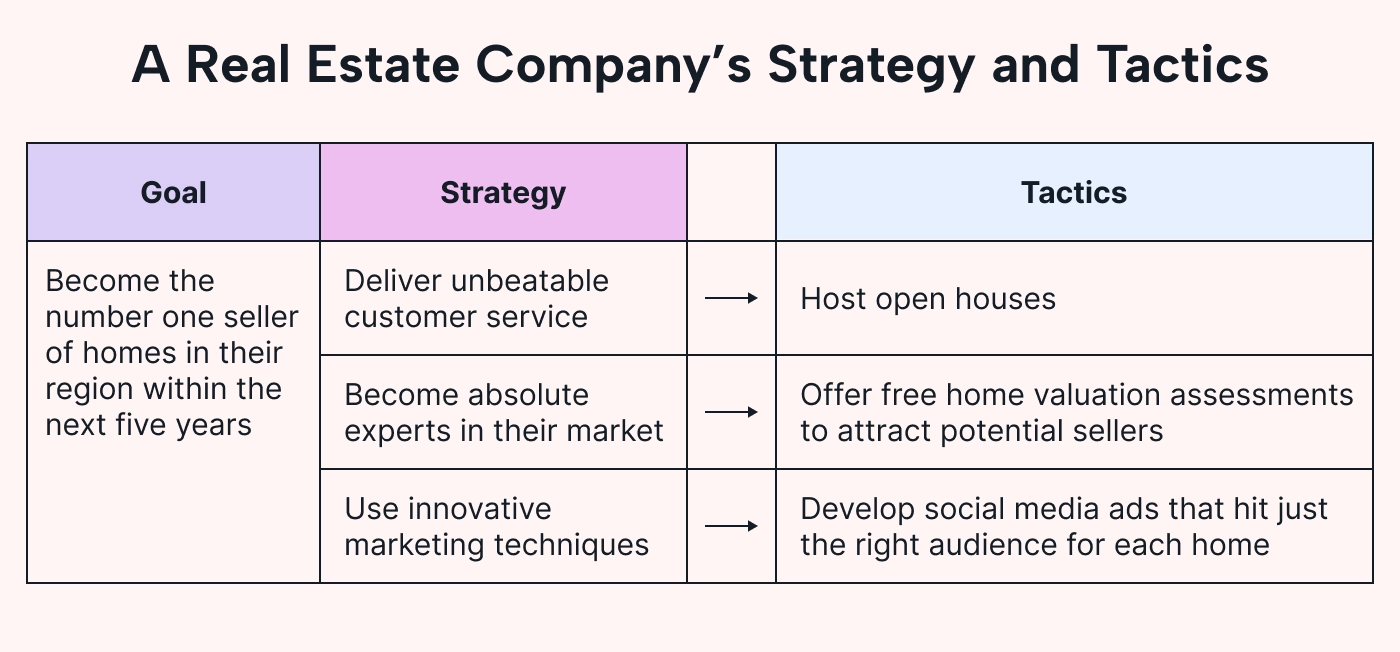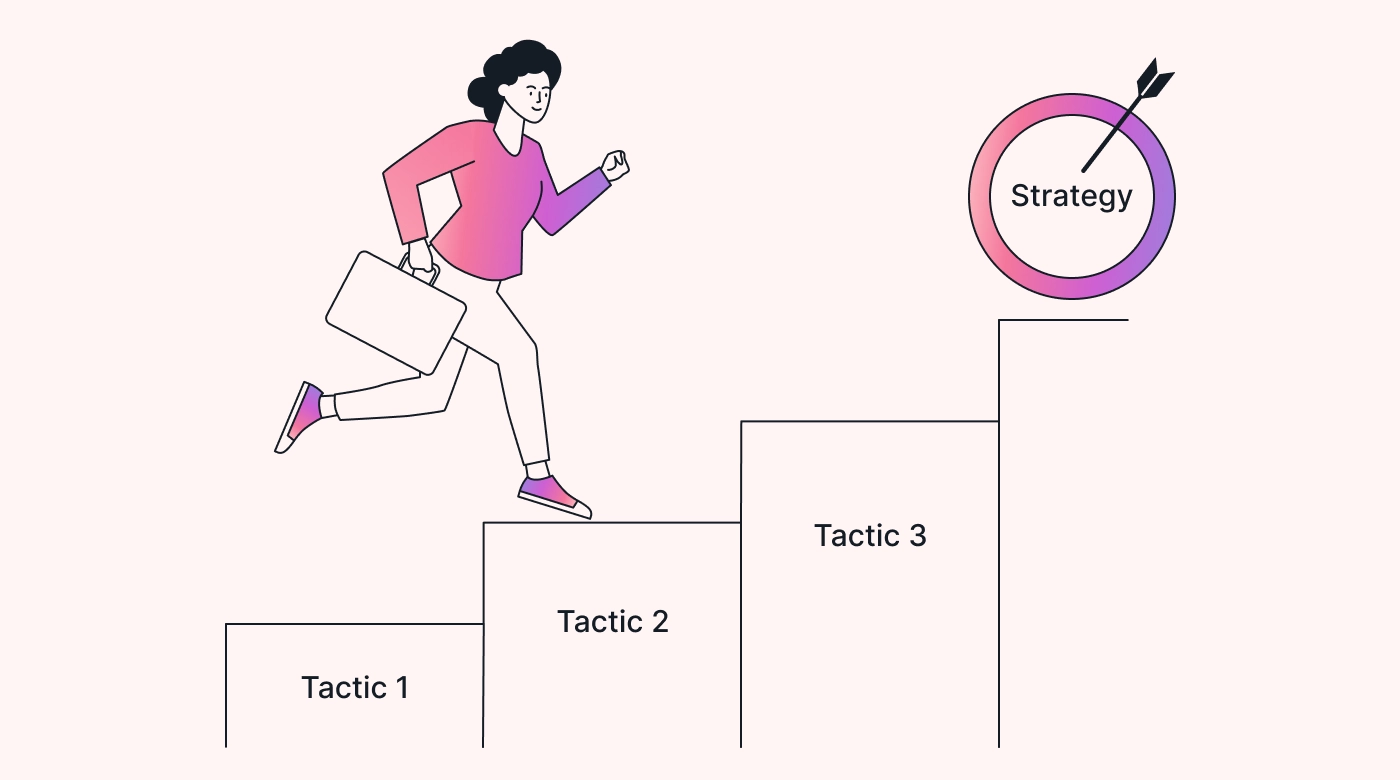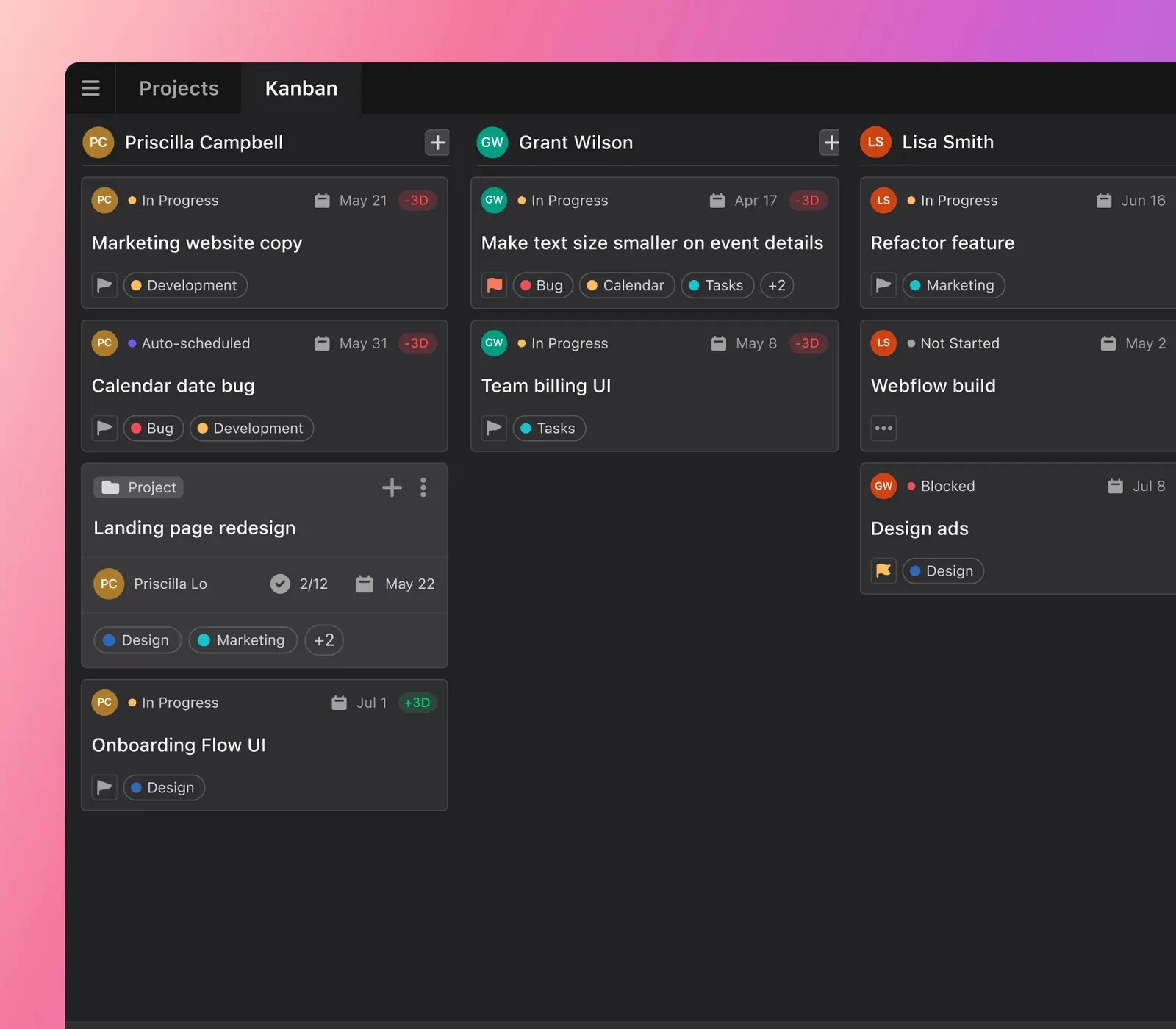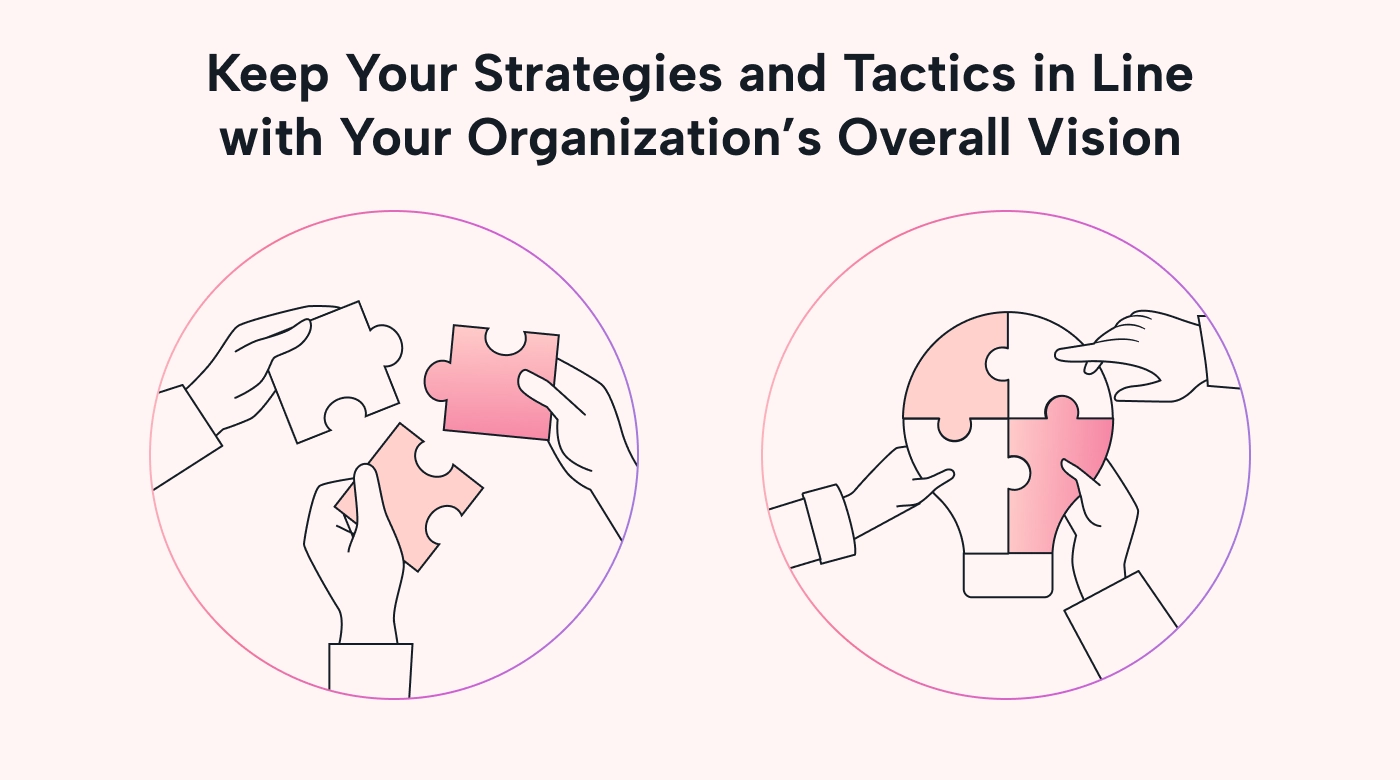You’re at your child’s basketball game, enjoying the action, when the coach calls the team together. Even without looking at the scoreboard, you know the team is behind. And that’s exactly why they’re huddling up — to figure out their game plan.
But wait — are they plotting their overall strategy or zeroing in on the tactical details?
This situation is a lot like the business world, where the line between strategy and tactics can blur. Yet, knowing the difference between them is vital. Without this insight, success might just come down to luck — whether you’re playing basketball or playing the market.
In this article, we show you the difference between strategy and tactics, how to use them to beat the competition and smash your big goals, and point out some traps to avoid.
What are the differences between strategy and tactics?
While you need both strategy and tactics to “win,” understanding their differences is crucial. So, let's explore what sets them apart.
What is strategy?
Strategy is the “what” part of the equation. It’s the big “X” on your map, marking where your treasure (AKA your long-term goals) is buried and the route you need to take to reach that point.
Focus: Your future dreams and ambitions.
Scope: Broad, touching every part of your organization.
Purpose: Strategy lights the way, helping you decide what’s crucial and how to wisely allocate your resources (your team, budget, time, etc.) to make your long-term vision a reality.
For instance, let’s say a real estate company dreams of leading the local market in five years. Its strategic objectives might include excellent customer service, knowing the market inside out, and using some creative marketing tactics. Which brings us to…
What are tactics?
If strategy is your big, bold plan for the future, then tactics are the nuts and bolts that hold it together. They're the specific actions — the “how” — that breathe life into your overarching strategy.
Focus: Short-term actions and achievements.
Scope: Narrower, zooming in on particular parts of your organization.
Purpose: Their job is to nail down specific objectives that edge you closer to your strategic goal — all through careful action and planning.
For the real estate company mentioned earlier, tactics could include hosting open houses, developing super-targeted ads on social media, or offering free home valuations to attract potential sellers.
 |
In short, think of strategy as the game plan for success and tactics as the moves you make to score.
What’s behind a winning strategy?
Behind every great strategy lies a story of sharp insight, creativity, and careful planning. It’s what separates the best from the rest. Let’s peel back the curtain and see what really powers a winning strategy:
Knowing exactly what you’re aiming for
A killer strategy starts with defining clear, achievable business goals. Think SMART goals — goals that are specific, measurable, attainable, relevant, and time-bound. These overarching goals are your guiding stars, steering every decision you make and action you take. They keep you moving forward, uniting your efforts and resources on the way to a single finish line.
Scoping out the playing field
Strategic planning means being the chess grandmaster in the business game. You need to know every piece on the board — your competition, what your customers really want, and where the market is heading.
For example, bookstore giant Borders thrived until it missed the ebook wave, something Amazon and Barnes & Noble capitalized on with the Kindle and Nook, respectively. Even worse, Borders clung to CDs as the rest of the world switched to digital music.
So, what’s the takeaway?
The best strategies don’t just react — they predict, play to your strengths, and flexibly adjust to stay ahead of the game.
Playing to your strong suits
An effective strategy spells out what makes you the go-to choice. Is it unbeatable quality, unique expertise, stellar service, or irresistible prices?
Highlighting your strongest suit helps you shine in the crowd, offering something special that’s tough for others to copy.
Look at Starbucks. Sure, people may quibble over their coffee’s taste and quality, but it’s the unique Starbucks experience that really pulls people in. As CEO Howard Schultz famously said, “We are not in the coffee business serving people. We are in the people business serving coffee.”
That’s how you play to your strengths and win.
What’s the secret to smart tactics?
Behind every successful strategy is a set of tactical actions ready to go. It’s about making the right moves at the right time.
Curious about what it takes? Here’s a sneak peek into the tactical planning toolkit:
Matching your moves with the master plan
Imagine playing a game of soccer. You wouldn’t just kick the ball anywhere or pass it without thinking. Each move is made with an eye on the goal, right? That’s exactly how tactical plans work in business.
They’re not random shots in the dark — they’re carefully planned actions that fit snugly with your strategic goals. You’re making sure that every move, no matter how small, moves your organization to victory.
 |
Knowing exactly what to do and how
Just like a well-coached soccer team where everyone nails their role, successful tactical execution relies on clarity and precision. It spells out exactly what needs to be done, who’s on it, and when it’s going down. This sharp focus cuts through the confusion, letting everyone hit the ground running with confidence.
Think of this like assigning the goalkeeper, striker, and midfielder their spots on the soccer field — everyone plays a part, and every move is calculated to bring home the win.
Measuring your progress
Much like how a scoreboard lights up with each goal scored, effective tactics come with their own way of measuring wins. They’re built with clear success metrics, like major milestones or key performance indicators (KPIs), making it easy to check how you’re stacking up against your objectives.
This ongoing evaluation isn’t just busy work — it’s vital for monitoring your progress and deciding if you need to tweak your approach or double down on what’s working.
Strategy vs. tactics examples
Strategy sets the goal, and tactics make that goal real. To get a better grip on what this looks like in action, let’s look at some examples of strategies and tactics working in harmony.
Marketing
Strategy: Improve brand awareness and generate 25% more leads with a digital marketing blitz over the next 12 months.
Tactics:
- Launch a targeted social media ad campaign.
- Roll out a killer content marketing plan featuring everything from blog posts to webinars and ebooks.
- Optimize your company’s website for SEO to increase organic search traffic.
Pro tip: With Motion, you can assign tasks to your team that automatically pop up in their calendars, from most important to least. That way, your team tackles the big stuff first, keeping your tactics and long-term strategy in sync.
 |
Project management
Strategy: Speed up project completion by 10% without compromising quality.
Tactics:
- Adopt an agile project management methodology (like Scrum or Kanban) for a more adaptable and step-by-step approach.
- Use project management software like Motion for smarter task sharing and deadline tracking.
- Conduct regular project review meetings to identify and resolve bottlenecks.
HR
Strategy: Boost employee engagement and reduce turnover by 15% in the next year through better engagement programs and career development opportunities.
Tactics:
- Develop and implement a comprehensive employee onboarding program.
- Offer regular training and professional development workshops.
- Conduct yearly employee satisfaction surveys to see where you can improve.
5 common mistakes to avoid
We all stumble from time to time, but some mistakes are big potholes on the road to success. Want to steer clear of these types of errors? Let’s look into the five big no-nos you’ll want to avoid.
1. Not keeping up with change
A common mistake is sticking to the old ways when everything else — markets, technology, and customer preferences — is changing.
Clinging to outdated strategies — maybe because of money already spent or just because change feels tough — can mean watching golden opportunities pass you by and letting competitors sneak ahead. So, stay alert and be ready to pivot. What worked yesterday might not be the winning move today.
2. Confusing strategy with tactics
Here’s a classic blunder — mixing up your roadmap (strategy) with the steps needed to get to your destination (tactics). This confusion can blur the bigger picture, leaving teams unsure of the larger goals they’re shooting for.
Let’s say a family-owned restaurant decides to offer delivery services to attract more customers. They might think this is a new strategy, but really, it’s a tactical move. Without fitting it into a high-level strategy, the boost in orders won’t translate into sustainable growth. Their strategy could involve tailoring the menu for delivery, targeting new demographics, or using technology to enhance service.
Grasping this distinction is crucial to seizing opportunities and securing a competitive edge.
 |
3. Developing tactics without strategy (and vice versa)
Ever start running without knowing where you’re going? That’s what happens when you roll out tactics without a solid strategy or create a strategy without considering the tactics needed to execute it. Both have to march in tune with your organization’s overarching vision and goals.
Otherwise, it’s like you’re rowing a boat in circles — you’re moving, but not toward where you need to be. This disconnect can wear out your team and dilute your efforts, making it hard for your organization to advance as one cohesive force.
4. Falling for the next big thing… again
It’s easy to get swept up in the latest trends or gadgets, hoping they’ll be shortcuts to success. However, these shiny distractions can lead you off course from your ultimate goal. Chasing after every new thing can scatter your efforts and resources, leaving you jumping from trend to trend without fully benefiting from any of them.
Stick to your guns and focus on what truly aligns with your strategy to keep your efforts concentrated and impactful.
5. Sweating the small stuff
Obsession with minute details can lead to analysis paralysis, where overthinking freezes your ability to get things done — ultimately distancing you from your main goals. Getting too caught up in planning can also mean missing out on real chances to act and leave a mark.
The trick is to find a balance. Don’t let minor issues prevent you from taking major strides.
How to measure the effectiveness of your strategy and tactics
Instead of guessing and hoping for the best, dial in on what works by tracking the right numbers and setting benchmarks. Here’s how to start:
Identify which KPIs to measure
To see how well you’re doing, choose KPIs that align with your goals and can be accurately measured. If you’re developing a sales strategy, you might track revenue growth, customer acquisition cost, and customer lifetime value.
For a digital marketing tactic, KPIs might include website traffic, conversion rate, and social media engagement metrics.
 |
Conduct regular review sessions
Make sure you’re on track with regular strategy health checks. Quick tactical reviews every month or quarter let you adjust on the fly.
Schedule a review every year or every six months to make sure your overarching strategy remains on point and adaptable.
Use analytics and tools
Tap into the power of analytics and tech tools to track your progress. These can help you track website traffic, conversion rates, sales data, and other relevant metrics to get a clear picture of your tactics at work.
Tools like Motion are also great for managing projects and resource allocation since they make sure you’re always on target.
Strategy vs. tactics: You need both
The timeout ends, and your kid’s basketball team heads back onto the court. They play much better now, and with only seconds on the clock, someone manages to score the winning shot.
That’s the power of strategy and tactics working together.
Running a business isn’t much different. You have to know when to zoom out for the big picture (strategy) and when to zoom in on the details (tactics).
And with Motion, you can’t miss. Say goodbye to the hassle of constant check-ins by staying on top of things with clear project visibility and progress tracking. Motion offers everything you need to align your big plans with the daily grind, all in one place.
Ready to score big? Sign up for a 7-day free trial today, and let’s make those wins happen.

Benita is a wizard at breathing life into the dry and dense world of B2B SaaS. Bringing a fresh perspective to every piece, Benita turns exhaustive research into a delightful read, making even the most well-covered topics feel fresh and exciting. When she's not writing, you can find her collecting recipes and crocheting her own clothes.




